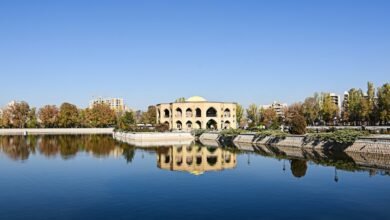
Staying connected while traveling in Iran is both easy and affordable, thanks to the country’s well-developed mobile network and the availability of prepaid SIM cards for foreign visitors. Whether you’re a tourist exploring the ancient cities, a business traveler, or a pilgrim heading to Mashhad or Qom, having a local SIM ensures you can navigate, book rides, use translation apps, and stay in touch.
1. Major Mobile Operators in Iran
Iran has three primary mobile service providers:
-
Hamrah-e-Aval (MCI) – The oldest and largest network, offering extensive nationwide coverage, including remote areas and pilgrimage sites.
-
Irancell (MTN) – Known for its affordable data plans and strong 4G LTE service in major cities like Tehran, Isfahan, Shiraz, and Mashhad.
-
Rightel – A smaller operator, offering 3G/4G in urban areas. Less commonly used by travelers.
For most visitors, Hamrah-e-Aval or Irancell are the best options.
2. Where to Buy a SIM Card
You can easily buy a SIM card:
-
At Tehran Imam Khomeini International Airport (IKA) upon arrival
-
At authorized stores in major cities like Tehran, Mashhad, Shiraz, and Isfahan
-
In pilgrimage destinations like Qom and Mashhad, where SIM card kiosks are common near shrines
Passport is required for SIM card registration.
3. Data and Call Packages
Prepaid packages are cheap and flexible, with options for:
-
Daily, weekly, or monthly data
-
International calls and roaming
-
Tourist-specific SIM bundles (limited availability)
Expect to pay around 100,000–250,000 IRR (less than $5 USD) for a SIM card with starter credit.
4. Internet Censorship and VPNs
Iran restricts access to many websites and apps (e.g., WhatsApp, Facebook, some Google services). To access these:
-
VPN apps like Psiphon, Lantern, or 1.1.1.1 are commonly used
-
Download and install your VPN before arriving, as app stores may be restricted locally
5. Network Coverage in Pilgrimage Sites
Pilgrimage cities like Mashhad (Imam Reza Shrine) and Qom (Hazrat Masumeh Shrine) have excellent mobile coverage, including 4G services. Hamrah-e-Aval offers the widest rural and intercity coverage, making it ideal for pilgrims traveling overland.
6. eSIM in Iran
Currently, eSIM support is limited in Iran. Travelers are advised to use physical SIM cards for maximum compatibility.
Quick Tips for Tourists
-
Bring an unlocked phone to use Iranian SIMs.
-
Keep a photocopy of your passport when registering your SIM.
-
Monitor your data usage using the operator’s mobile app (often in Persian but manageable).
-
Recharge credit at kiosks, convenience stores, or via online portals (with help from locals if needed).
Final Word
Whether you’re visiting Iran for tourism, business, or religious pilgrimage, having a local SIM card will significantly enhance your experience. With reliable coverage, affordable data, and easy access to SIMs, staying connected in Iran is simple and essential.



